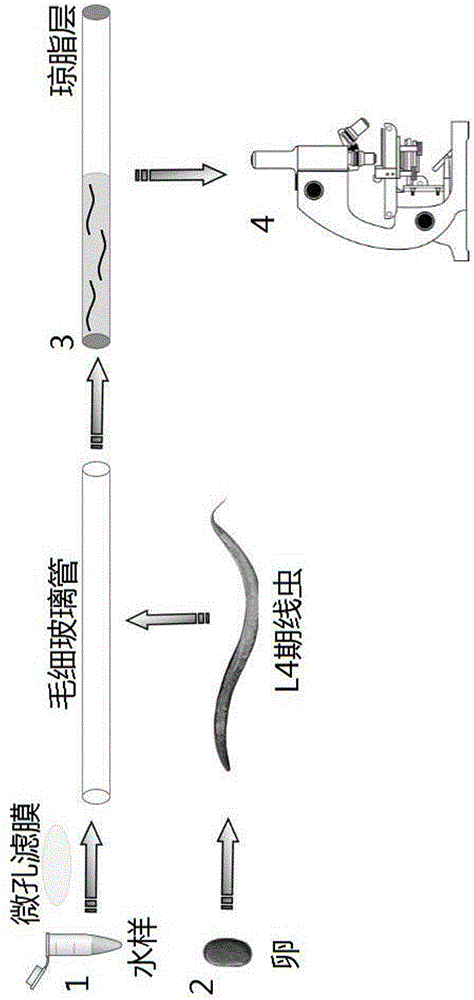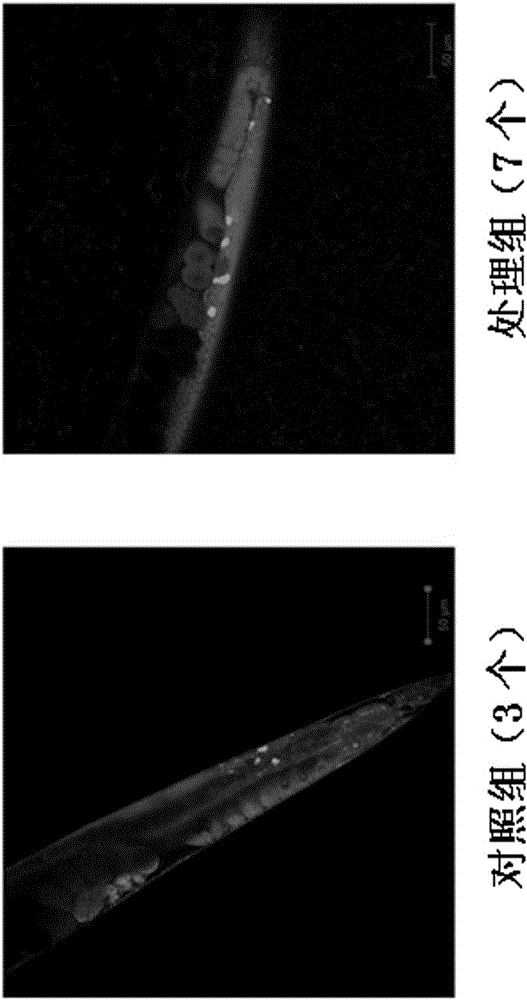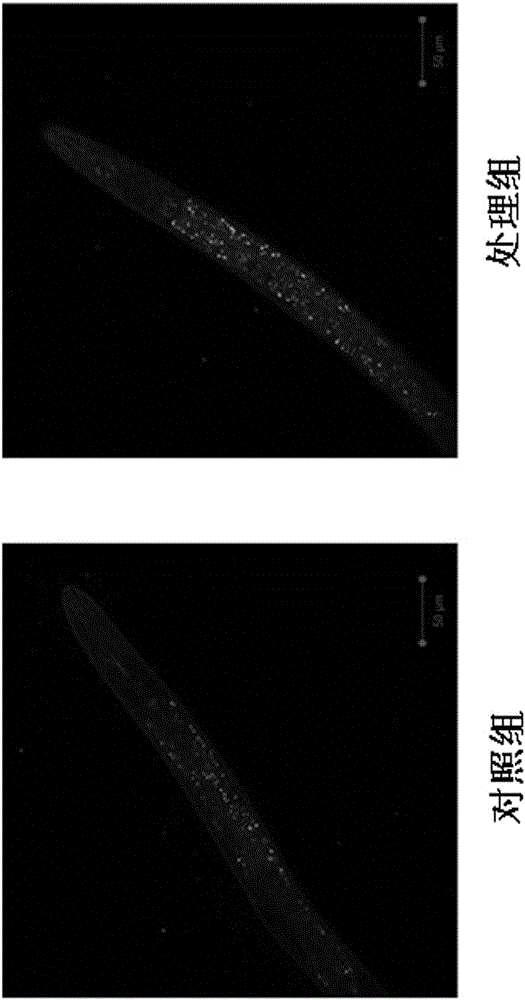A Toxicological Detection Method of Trace Water Samples Based on Caenorhabditis elegans
A Caenorhabditis elegans and detection method technology, which is applied in the field of toxicological detection of trace water samples based on Caenorhabditis elegans, can solve the problems of high cost, complicated detection process, and long time consumption, and achieve small water sample volume and simple cultivation , the effect of detection step optimization
- Summary
- Abstract
- Description
- Claims
- Application Information
AI Technical Summary
Problems solved by technology
Method used
Image
Examples
Embodiment 1
[0034] Example 1: Method for detecting apoptosis of gonad cells in trace water samples based on Caenorhabditis elegans
[0035] This example describes a method for the detection of gonad cell apoptosis in trace water samples based on Caenorhabditis elegans, the steps of which include the sterilization treatment of environmental water samples, the cultivation process of Caenorhabditis elegans, and the exposure of biological samples of environmental water samples. Process, fluorescence microscopy and differential interference contrast microscopy for toxicological determination procedures.
[0036] Step 1. Sterilization of environmental water samples
[0037] Use 2 pieces of 0.22 μm microporous filter membranes, place them in the middle of the filter of the corresponding size, sterilize the assembled filter at 121 degrees Celsius for 20 minutes, and then filter the environmental water samples;
[0038] Step 2, the cultivation process of Caenorhabditis elegans
[0039] Wild-type C...
Embodiment 2
[0044] Example 2: Method for detecting oxidative stress level in trace water samples based on Caenorhabditis elegans
[0045] The basic method of this example is the same as that of Example 1, except that in step 2, the staining reagent of the nematode is replaced with 10 μg / mL CM-DCFDA, and in step 4, the fluorescence intensity in the nematode is observed with a fluorescence microscope and image proplus software is used to carry out Analysis of fluorescence intensity.
Embodiment 3
[0046] Example 3: Method for detection of oxidative stress in trace water samples based on Caenorhabditis elegans
[0047] The basic method of this embodiment is the same as that of Example 1, except that the strain of the nematode is replaced by CF1553 , this strain is based on wild-type nematodes, and the green fluorescent protein is coupled to the promoter of SOD-3, so that the intensity of green fluorescent protein is equal to the expression level of SOD-3. SOD-3 is an inhibitor of oxidative free radicals in nematodes, and the level of oxidative stress in nematodes can be detected by observing the expression of SOD-3. The difference is that in step 4, the fluorescence intensity in the nematode is observed with a fluorescence microscope and the analysis of the fluorescence intensity is performed with Image pro plus software.
PUM
 Login to View More
Login to View More Abstract
Description
Claims
Application Information
 Login to View More
Login to View More - R&D
- Intellectual Property
- Life Sciences
- Materials
- Tech Scout
- Unparalleled Data Quality
- Higher Quality Content
- 60% Fewer Hallucinations
Browse by: Latest US Patents, China's latest patents, Technical Efficacy Thesaurus, Application Domain, Technology Topic, Popular Technical Reports.
© 2025 PatSnap. All rights reserved.Legal|Privacy policy|Modern Slavery Act Transparency Statement|Sitemap|About US| Contact US: help@patsnap.com



